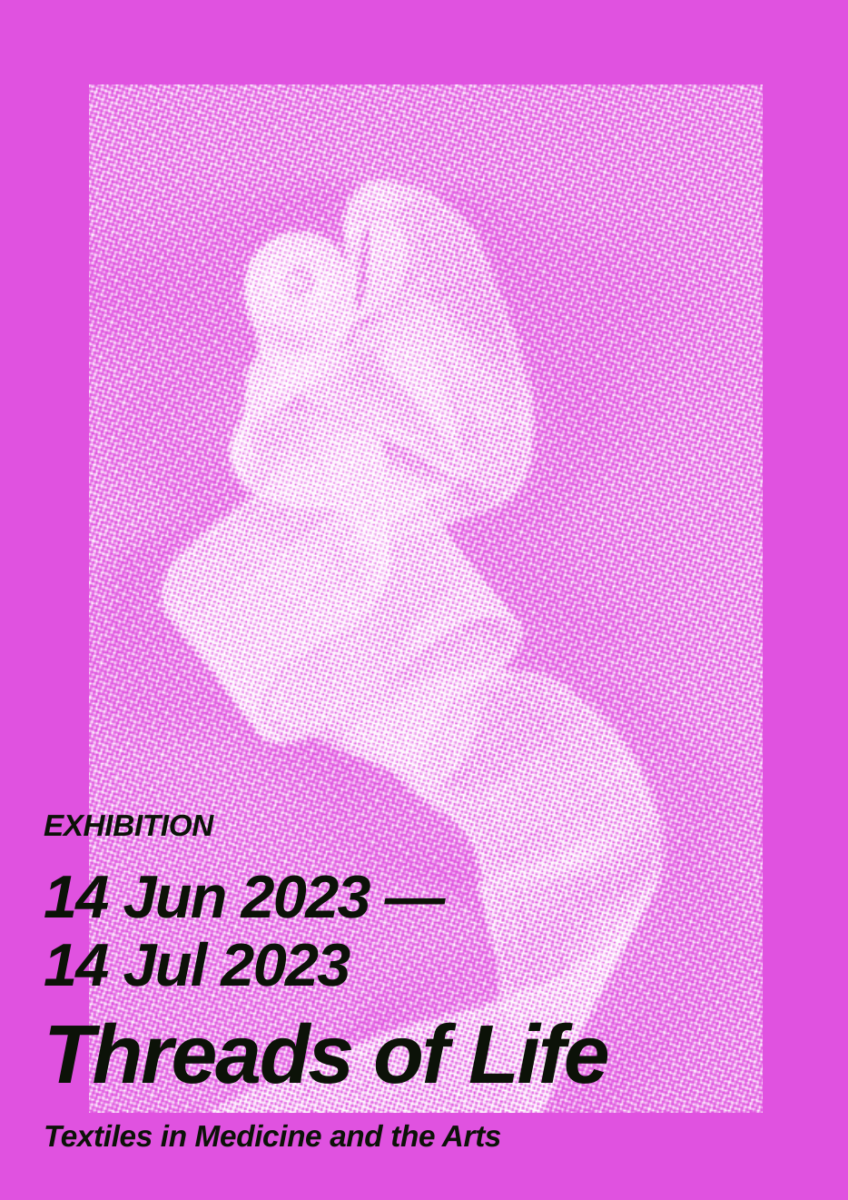
Hello fellow Humans!
In June, we connect the disciplines of medicine and art through the subject of textiles. What is the multifaceted relationship between those three and which dialogue and productive tension can be generated by combining historical and artistic positions?
Join us next week for the opening of Threads of Life. Textiles in Medicine and the Arts.
We strive to curate a vibrant and diverse program, and June is no exception, find all details below, we look forward to seeing you soon!
Opening Hours AIL Exhibition:
Mon, Tue, Wed, Fri: 13:00 – 18:00
Thu: 13:00 – 20:00
Opening Hours Café Exchange:
Mon, Tue, Wed, Fri: 10:00–18:00
Thu: 10:00–20:00
(Lunch from 12:00–15:00)
Unless otherwise stated, all AIL events are free and no registration is required. – Find all details on ail.angewandte.at
Opening: 13 June, 18:00
Exhibition: 14 June – 14 July
Threads of Life
Textiles in Medicine and the Arts
Although textiles have been indispensable to medicine since time immemorial, their role in this context has been understudied so far. From the surgical thread, wound dressings, wipes, pads, and protective clothing to the hospital bed, the practices of healing are unimaginable without them. But the relationship between textiles in the arts, wellbeing and health is much broader. It includes, but is not restricted to, the use of such techniques as knitting, crocheting, weaving or braiding in the development of cardiovascular grafts or surgical meshes.
The use of textiles is also ambivalent. They have found use in psychiatric institutions for the bodily restraint of patients, but patients also used them for designing their environment and creating body wrappings as survival strategies. Textiles can also be a source of ill-health: Beyond the addition of harmful substances during their production, textiles have been used in fashion for centuries to shape, deform and discipline the body according to ideals of beauty. Practitioners from the fields visual arts and artistic research reflect on this complicated relationship in manifold ways. Artists use fabrics to evoke the vulnerability of the human body, its ongoing decay and imminent death, and also to highlight the complexity of interhuman relationships.
Artists:
Sonja Bäumel, Pascale Maxime Ballieul, Camille Borchert, Ida Flora Frantal, Raja Goltz, Barbara Graf, Ruth Anderwald + Leonhard Grond, Elizabeth McGlynn, Ute Neuber, Katharina Sabernig, Hannah Schwab, Yuliia Strykovska, Leo Ruben Enosch Zellweger
Curatorial team:
Monika Ankele (Medical University of Vienna), Barbara Graf (University of Applied Arts Vienna), Katrin Pilz (Ludwig Boltzmann Institute for Digital History, Vienna), Monika Pietrzak-Franger (University of Vienna), Barbara Putz-Plecko (University of Applied Arts Vienna), Katharina Sabernig (University of Applied Arts Vienna), Georg Vasold (University of Vienna).
The curatorial team is part of the transdisciplinary working group History of Medicine and Medical/Health Humanities of the Austrian Academy of Sciences (ÖAW).
20 June, 10:00 – 18:30
Symposium: Threads of Life. Textiles in Medicine and the Arts
Program Overview
10:00 Welcome & Introduction
10.40 Keynote I
11:30 – 12:30 Guided Tour through the exhibition
13:30 – 17:00 Conversation I & II
17:30 Keynote II
18:30 Social Gathering
(Detailed Program)
Lecturer and Keynote Speakers:
Lydia Arantes (University of Graz), Monika Ankele (Medical University Vienna), Leonie Braam (University Hospital and Faculty of Medicine Tübingen), Helmut Denk (Project Lead History of Medicine and Medical/Health Humanities), Anamaria Depner (Goethe University Frankfurt), Barbara Graf (University of Applied Arts Vienna), Heidi Helmhold (University of Cologne), Céline Kaiser (HKS – University of applied sciences and arts in Ottersberg), Barbara Putz-Plecko (University of Applied Arts Vienna), Christine Radtke (Medical University Vienna), Monika Pietrzak-Franger (University of Vienna), Katharina Sabernig (University of Applied Arts Vienna), Georg Vasold (University of Vienna)
[This Symposium will be held in German]